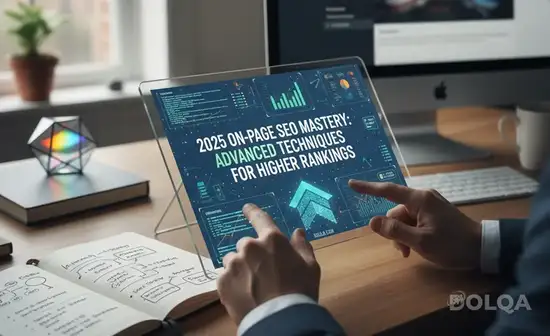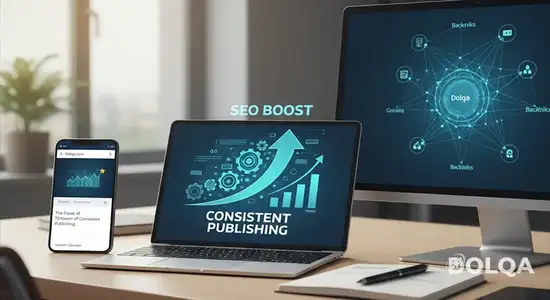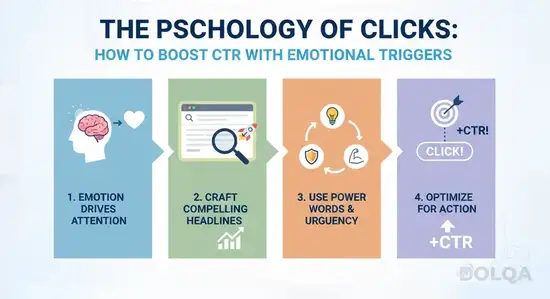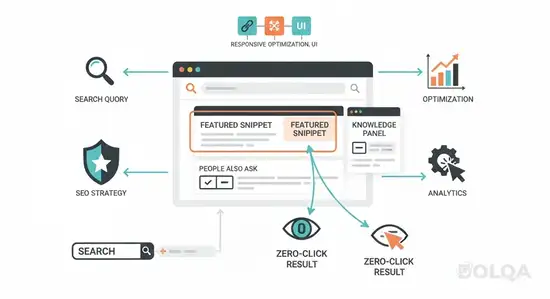Introduction
On-page SEO in 2025 has evolved beyond basic keyword placement into a sophisticated technical discipline requiring deep understanding of semantic search, user experience signals, and algorithmic ranking factors. The most impactful techniques now center on aligning keyword intent with content structure, implementing advanced meta optimization protocols, and architecting strategic internal linking systems that distribute PageRank efficiently. Search engines have become increasingly adept at understanding contextual relevance and user satisfaction metrics, making technical precision in on-page optimization more critical than ever for competitive rankings.
Advanced Meta Optimization Protocols
Meta optimization extends far beyond crafting simple title tags and descriptions. Modern implementations require systematic approaches to metadata architecture across entire site taxonomies.
Title Tag Engineering
Effective title tags in 2025 follow specific technical parameters: primary keywords positioned within the first 65 characters, semantic modifiers that capture related search queries, and branding elements placed strategically to maximize click-through rates without diluting relevance signals. The optimal structure places commercial intent terms at the beginning for transactional pages while informational content benefits from question-based or problem-solution frameworks.
Advanced practitioners implement dynamic title tag systems that adjust based on user search patterns and seasonal query variations. This requires server-side logic or JavaScript implementations that maintain crawlability while personalizing metadata for different user segments.
Meta Description Optimization
Meta descriptions function as advertisement copy within search results, demanding persuasive language that incorporates primary and secondary keywords naturally. The technical constraint of 155-160 characters necessitates precision in word choice. Effective descriptions include clear value propositions, active voice constructions, and subtle calls-to-action that drive engagement metrics.
Schema markup integration with meta descriptions enhances rich snippet eligibility, particularly for FAQ, HowTo, and Product schemas that expand SERP real estate and improve visibility metrics.
Header Tag Hierarchy
Proper H1-H6 implementation establishes content structure that both users and search engine crawlers can parse efficiently. Each page requires exactly one H1 tag containing the primary keyword phrase, followed by hierarchical H2 and H3 tags that segment content into logical topical clusters. This hierarchy signals information architecture to algorithms while improving readability and reducing bounce rates.
Content Structure for Semantic Relevance
Content structure in 2025 must accommodate natural language processing algorithms that evaluate topical authority through entity recognition and semantic relationship mapping.
Topical Clustering Architecture
Implementing hub-and-spoke content models creates semantic relationships between pillar pages and supporting content. Pillar pages target broad keywords while cluster content addresses long-tail variations and specific subtopics. This architecture signals comprehensive topical coverage to search algorithms while creating natural internal linking opportunities.
Technical implementation requires careful URL structuring that reflects content hierarchy, typically using subdirectory organization rather than parameter-based routing for optimal crawl efficiency.
Keyword Intent Alignment
Understanding and matching keyword intent represents the most critical factor in modern on-page SEO. Search queries fall into four primary categories: informational, navigational, commercial investigation, and transactional. Each intent type demands specific content structures and conversion pathways.
Informational intent requires comprehensive explanatory content with clear headings, supporting media, and educational frameworks. Commercial investigation intent benefits from comparison tables, feature breakdowns, and transparent advantage-disadvantage analyses. Transactional intent pages must minimize friction points while providing essential decision-making information.
Advanced implementations use intent-specific templates that automatically structure content based on target keyword classification, ensuring alignment between user expectations and page architecture.
Semantic Keyword Integration
LSI (Latent Semantic Indexing) keywords and entity-related terms must appear naturally throughout content to establish topical relevance. Modern algorithms evaluate co-occurrence patterns and contextual relationships rather than raw keyword density. Technical writers implement semantic keyword frameworks that identify required entity mentions, related concepts, and contextual terminology for comprehensive topical coverage.
Natural language generation tools can assist in identifying semantic gaps, but human editorial oversight remains essential for maintaining content quality and avoiding algorithmic penalties for thin or duplicative content.
Strategic Internal Linking Architecture
Internal linking represents one of the most underutilized technical levers in on-page SEO, despite its significant impact on crawl efficiency and PageRank distribution.
Link Equity Distribution
Strategic internal linking channels link equity from high-authority pages to target pages requiring ranking improvements. This requires systematic auditing of existing link graphs to identify pages with accumulated authority that can support priority content through contextual linking.
Technical implementation involves anchor text optimization using exact-match, partial-match, and branded variations to avoid over-optimization penalties while maintaining relevance signals. The optimal ratio typically allocates 30-40% exact-match anchors, 40-50% partial-match variations, and 10-20% branded or generic anchors.
Contextual Linking Strategies
Links embedded within relevant content contexts carry significantly more algorithmic weight than navigational or footer links. Contextual links should connect semantically related content using descriptive anchor text that provides clear expectations about destination page topics.
Advanced strategies implement automatic linking systems that identify semantic relationships between content pieces and suggest relevant internal link opportunities. These systems use natural language processing to match content themes and avoid irrelevant or forced linking patterns.
Link Depth Optimization
Critical content should remain within three clicks of the homepage to ensure adequate crawl frequency and PageRank allocation. Technical audits should identify orphaned pages or content buried too deeply in site architecture, implementing corrective linking strategies to improve accessibility.
URL structure directly impacts link depth, making flat hierarchies preferable to deeply nested subdirectory structures for most site types.
Technical On-Page Elements
Beyond content and linking, specific technical elements significantly impact on-page SEO performance.
Core Web Vitals Optimization
Page experience signals including Largest Contentful Paint (LCP), First Input Delay (FID), and Cumulative Layout Shift (CLS) directly influence rankings. Optimal performance requires:
- LCP under 2.5 seconds through image optimization and critical CSS delivery
- FID under 100 milliseconds via JavaScript optimization and third-party script management
- CLS under 0.1 through explicit size declarations for all media elements
Structured Data Implementation
JSON-LD structured data enables rich snippet eligibility and enhances search engine understanding of content context. Priority schema types for 2025 include Article, FAQPage, HowTo, Product, LocalBusiness, and Organization schemas.
Proper implementation requires validation through Schema.org specifications and testing through Google's Rich Results Test to ensure eligibility for enhanced SERP features.
Mobile-First Optimization
With mobile-first indexing as standard practice, mobile page performance takes priority over desktop versions. Technical requirements include responsive design implementation, touch-friendly interface elements, and mobile-optimized content layouts that avoid horizontal scrolling or excessive zooming requirements.
Measuring On-Page SEO Success
Effective optimization requires systematic measurement of key performance indicators:
- Organic traffic growth segmented by keyword intent categories
- Average position improvements for target keywords
- Click-through rate optimization through meta optimization
- Engagement metrics including time on page, scroll depth, and bounce rate
- Conversion rate improvements from organic traffic sources
Technical implementations should include comprehensive tracking systems using Google Analytics 4, Google Search Console, and third-party SEO platforms that provide granular performance data.
Conclusion
On-page SEO in 2025 demands technical sophistication across meta optimization, content structure, and internal linking architecture. Success requires systematic implementation of advanced techniques aligned with search engine algorithmic priorities and user experience expectations. Organizations that invest in comprehensive on-page optimization frameworks, particularly those addressing keyword intent alignment and semantic relevance, will achieve sustainable competitive advantages in organic search visibility. The technical complexity of modern on-page SEO necessitates ongoing education, systematic auditing, and continuous refinement of optimization strategies to maintain ranking positions in increasingly competitive search environments.
Sources and References
- Google Search Central Documentation - Advanced SEO Guidelines (2024-2025)
- Moz - The Beginner's Guide to SEO: On-Page Optimization Best Practices
- Search Engine Journal - Technical SEO: The Complete Guide for 2025
- Ahrefs - On-Page SEO: The Definitive Guide
- Backlinko - On-Page SEO: Anatomy of a Perfectly Optimized Page
- SEMrush - On-Page SEO Checker: Technical Analysis and Recommendations
- Schema.org - Structured Data Documentation and Implementation Guidelines
- Google Search Central - Core Web Vitals Report and Optimization Strategies
- Search Engine Land - The Periodic Table of SEO Factors
- HubSpot - Technical SEO Guide: On-Page Optimization in Modern Search







Comments (0)
Leave a Comment
No comments yet. Be the first to comment!